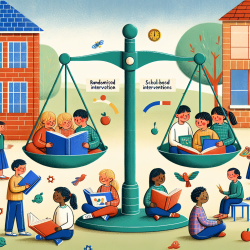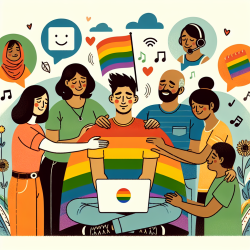Introduction
In recent years, there has been a growing interest in interventions that support children with Autism Spectrum Conditions (ASC) within educational settings. One such intervention is the use of Social Stories™, a tool designed to help children with ASC understand social situations better. The Autism Spectrum Social Stories In Schools Trial 2 (ASSSIST2) is a significant study that aims to evaluate the clinical and cost-effectiveness of Social Stories™ in primary schools. This blog post will delve into the findings of the ASSSIST2 trial and explore how practitioners can implement these insights to enhance outcomes for children with ASC.
Understanding Social Stories™
Social Stories™, developed by Carol Gray, are short, personalized narratives that provide children with social information tailored to their specific needs. These stories help children with ASC navigate challenging social situations, learn life skills, and manage transitions. The ASSSIST2 trial is a comprehensive study that investigates the impact of Social Stories™ on children with ASC in primary schools across Yorkshire and the Humber.
The ASSSIST2 Trial: Methodology and Objectives
The ASSSIST2 trial is a multi-site pragmatic cluster randomized controlled trial (RCT) that compares the use of Social Stories™ alongside usual care with usual care alone. The study recruited 278 children aged 4-11 with a clinical diagnosis of ASC. The primary objective was to assess whether Social Stories™ could improve social responsiveness in these children. Secondary objectives included evaluating the impact on challenging behavior, social and emotional health, and cost-effectiveness.
Key Findings
- Social Responsiveness: The trial found that Social Stories™ significantly improved social responsiveness in children with ASC compared to usual care alone. This was measured using the Social Responsiveness Scale Second Edition (SRS-2).
- Behavioral Improvements: Children receiving the Social Stories™ intervention showed reductions in challenging behavior and improvements in social and emotional health.
- Cost-Effectiveness: The study demonstrated that Social Stories™ are a cost-effective intervention, providing significant benefits without requiring extensive resources.
Implications for Practitioners
Practitioners working with children with ASC can leverage the findings of the ASSSIST2 trial to enhance their practice. Here are some recommendations:
- Incorporate Social Stories™: Practitioners should consider integrating Social Stories™ into their intervention strategies. The trial's positive outcomes suggest that these stories can be a valuable tool in improving social skills and reducing challenging behaviors.
- Tailor Stories to Individual Needs: Social Stories™ are most effective when personalized to the child's specific challenges and goals. Practitioners should work closely with children and their families to develop stories that address individual needs.
- Training and Collaboration: Schools should invest in training educators and support staff in the development and delivery of Social Stories™. Collaboration between teachers, parents, and specialists is crucial for successful implementation.
Encouraging Further Research
While the ASSSIST2 trial provides robust evidence supporting the use of Social Stories™, there is still a need for further research. Practitioners are encouraged to contribute to the growing body of literature by conducting additional studies, particularly in diverse educational settings and with different age groups.
To read the original research paper, please follow this link: Autism Spectrum Social Stories In Schools Trial 2 (ASSSIST2): study protocol for a randomised controlled trial analysing clinical and cost-effectiveness of Social Stories™ in primary schools.










